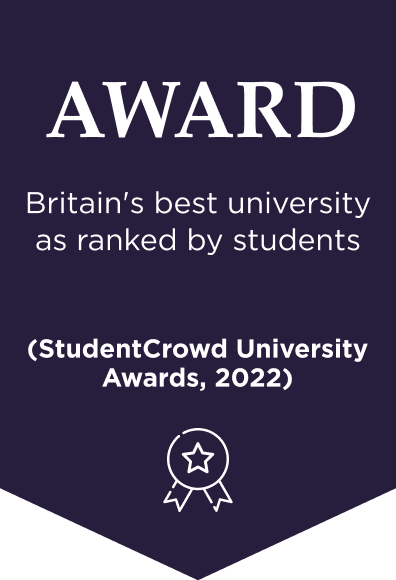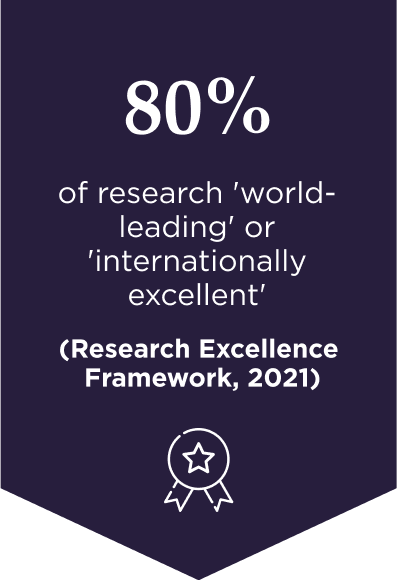The keys to understanding people, work and organisations
Posted on: November 23, 2021
The world of work has changed dramatically in the last few years not least due to the challenges presented by the pandemic. Even before this major global event, attitudes to work and how people are treated within the workplace were shifting.
At a time when devices have made it easy to be constantly connected to work life, human resource management (HRM) can play a great role in helping organisations to find the right balance. To add to this, working from home and flexible hours have become fairly common practice, but require skilled people management in order to coordinate successfully. A culture of always being “switched on” can lead to mental health issues and burn out. Conversely, without organisational structures in place, it can be difficult for everyday operations to run smoothly if people are “at work” at different times. HRM is increasingly involved in facilitating new ways of working that support people and take work-life balance into account, while also being efficient and effective in organisational contexts.
To accommodate these shifts, skilled HR management roles will become more specialised with Forbes predicting that titles such as Director of Learning, Diversity Officer, Mindset Coach, and Talent & Repertoire Manager will emerge. Whatever the future may bring, organisational behaviour, organisational design, and organisational structure will continue to create a solid foundation for businesses to build upon.
What is organisational behaviour?
Organisational behaviour is the study of how individuals behave within groups and how that shapes the way an organisation works as a whole. It’s a field which borrows concepts and models from social sciences like anthropology, psychology, sociology, political science and economics.
In organisational behaviour, there are three main areas:
- Individual behaviour
- Group behaviour
- Organisational behaviour
In understanding individual behaviour, factors like motivation, perception, personality, and values need to be taken into account. Group behaviour is concerned with communication, decision-making, teamwork (or conflict), and politics. Organisational behaviour looks at the company or business as a whole including things like systems, processes, culture, and the policies and practices.
What is organisational design?
Organisation design is a strategy-driven practice that helps organisations to find alignment within their structures, workflows, and resources. By reviewing the current organisational culture, systems, and processes, the organisation can start setting goals for where it wants to be in the future. This will inform the organisational structuring moving forwards.
The kinds of inefficiencies that organisational design might identify and aim to rectify include:
- Duplicated efforts across teams
- Siloed work that is not in line with company goals
- Lack of focus on customer needs
- Lack of accountability
- Schisms between teams
- Bottlenecks created by the need for decision-making
- Processes and systems that hinder rather than enable
- Mistrust between managers and their teams
Because organisational design looks at the organisation as a system, it acknowledges that change in one area is likely to have a knock-on effect in another area. Consequently, early models were developed to map out the organisation’s framework. These include the McKinsey 7-S Model, the Galbraith Star Model, and the Burke Litwin Model. Although these have been integral in shaping organisational design, the world we now live in requires more agile models that allow for complexity, change and large-scale collaborations among multiple organisations. Emerging models which consider these non-linear factors include the Holonic Enterprise Model, McMillan’s Fractal Web, and Ken Wilber’s AQAL Model
In 2020, the CIPD published its report People Profession in 2030: a collective view of future trends to consider what the future of organisation design could look like. The book, ‘Guide to organisation design: creating high-performing and adaptable enterprises’ by Naomi Stanford is also a useful reference.
What is organisational structure?
The organisational structure outlines how an organisation will reach its goals through rules, roles, and responsibility. While organisational design is rooted in methodology that identifies blocks and creates a roadmap for change, organisational structure is the solid plan that the organisation puts into place to remedy any issues. It is often represented by an organogram, which delineates which stakeholders do what and how that contributes to the aims of the organisation.
More specifically, it describes:
- What each individual does
- Their job description
- Who they report to
- How each role fits in the system
- Which group or department it fits into
- Who makes decisions
There are four main types of organisational structure, which are decentralised. This means that decisions are made by managers of teams or even by team members themselves rather than by head office. This allows business to move faster, building confidence in individuals to take the initiative and prevent bottlenecks where possible.
The old hierarchical management practices are still in existence in older, larger corporations but their inefficiencies become more evident as leaner, more agile businesses overtake them.
Functional structure
This is the most common structure and is sometimes referred to as a bureaucratic organisational structure. It creates groups within a company based on the specialisations within the workforce. Generally, these are known as departments and they commonly fall into functions such as marketing, sales, and operations, for example.
Divisional structure
This is common in large, multinational companies and is an example of a decentralised structure where each business unit of the company has its own leadership team. In fact, each may have its own president and essentially operate as its own company. Divisions in multinationals are sometimes dictated by geographic location.
Flatarchy structure
This is quite a new structure predominantly used by startups and smaller businesses. As the name implies, in a flatarchy, the hierarchy is flattened and more autonomy is granted by leadership. This suits startups in sectors like tech that ship and iterate rapidly. As the business grows, it may expand to scrum teams, keeping the focus on problem-solving and cooperation while remaining fairly flat.
Matrix structure
Matrixing employees across different departments, each individual typically has two or more lines of report thereby creating cross-functional teams. This can lead to a dynamic organisation, but it can also create conflict between department managers.
Another structure which we may see more of in the future is the network structure. In the past, it has not been as easy to manage as it involves subcontractors and freelancers in offsite locations. This makes for a lean and flexible structure which can adapt to market challenges almost immediately, but the reliance on third parties can make it less cohesive. With the new structures and processes that the global pandemic has forced businesses to build quickly, this structure becomes potentially more viable.
McKinsey’s report ‘Ready, set go: Reinventing the organization for speed in the post-COVID-19 era’ called on businesses to “Flatten the structure” and reimagine “structure not as a hierarchy of bosses, per the traditional organisation chart, but rather as a dynamic network of teams.”
Study for an MBA and organise your future
Understanding organisational behaviour to support people, work, and organisations themselves is key for business.
If you’re keen to brush up on your management skills and learn more about organisational development, the online MBA from Keele could be the perfect fit, allowing you to study while you continue to work. Find out more about course requirements and how to sign up today.



